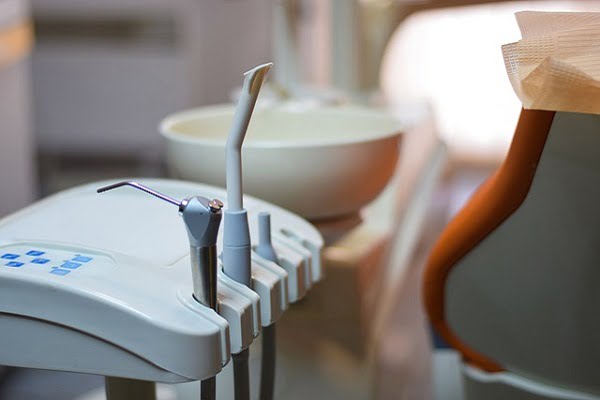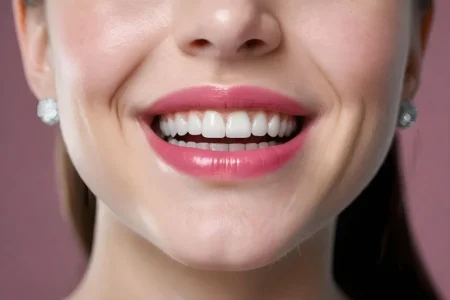Who is an Emergency Dentist?
Emergency dentist performs treatment and examination of an urgent dental problem on priority basis. These dental problems may create difficulty while eating food, talking, and in some cases during movement of head.
Some common dental problems which require a visit to an emergency dentist include:
- Extreme pain in tooth or gums
- Continuous bleeding tissue in the mouth
- Fractured tooth
- Dental restoration
- Infection in your tooth
- Any injury to the face, mouth or teeth
You should not delay your visit to your dentist or try to manage any of these symptoms on your own. Dental emergencies should be treated under the guidance or supervision of a dental health care professional only. Your dentist can be the best guide to provide immediate dental aid and also preserve your teeth for a longer duration of time.
Common Dental Problems
Dental problems range from mild or severe dental issues, which may or may not require an immediate visit to a dentist. They are broadly classified as traumatic and non-traumatic tooth problems.
Traumatic Tooth Problems
Traumatic tooth problems are those dental issues which require an urgent attention of your dentist or you may visit a hospital’s emergency department urgently. These issues include:
Knocked Out Teeth
- If any of your permanent tooth is lost or broken, it may require an emergency dentist’s attention. The dentist may re-implant your affected tooth. Read about broken tooth (tooth loss).
- If you recover your lost tooth, you may hold or touch it with the crown rather than its root. You should never hold a knocked out tooth with its root region. Do not remove any tissue attached on your tooth.
- If your tooth is dirty, you can clean it by rinsing it with tap water. Do not scrub your teeth. Place a wash cloth or paper towel in the sink so that the tooth does not go down the drain.
- You should keep your tooth moist. The best method to keep your tooth moist is by placing it back in the socket or from the site from where it is knocked out. You can also place your teeth between the gum and cheek to keep it moistened with your saliva.
- The lost tooth can be placed in milk to provide moisture.
Broken or Chipped Tooth
- If you observe any broken or chipped off tooth, you should immediately visit your doctor.
- You can keep the broken or chipped piece of tooth in a cool moist cloth.
- Chips or broken tooth can vary from person to person. Extent of chipping will affect the treatment method.
Subluxation
- Subluxation is defined as a tooth which has been knocked out of position or its alignment has been changed.
- You can try to push back the tooth to its original position by applying very little pressure. Do not apply too much force on your affected tooth.
- Till the time you visit your dentist, you can hold the teeth in the exact position by biting it down. Do not delay your visit to your dentist as it can lead to severe complications.
- To heal your tooth, your dentist may splint the affected tooth.
Lacerations
- Lacerations or cuts on your cheek, gums and tongue can occur due to a trauma to the mouth area, such as blow or falling and biting your tongue or cheek.
- Any such cut may require immediate medical attention in the hospital’s emergency department or by your dentist.
- If you apply direct pressure to the cut, it can help control the excessive bleeding.
- Some lacerations which may occur inside your mouth can be stitched by your dentist whereas; some of them may recover on their own. Some of these cuts are also treated with the help of antibiotics.
Dislodged Dental Restorations
- Temporary or permanent fillings can be lost while eating hard or sticky food. You should visit your dentist for re-filling your affected dental cavity.
- If your crown gets dislodged, you should preserve it carefully so as to get it replaced back in the same location.
- If you observe any fractured crown, they it may require a complete replacement.
Cracked or Fractured Tooth
- A cracked or fractured tooth is a serious dental issue and requires immediate medical assistance.
- It involves damage to the inside or outside of the tooth.
- In some cases, severe fractures are quite extreme and cannot be saved. You may require complete replacement of your fractured tooth.
- A dental X-ray is carried by your dentist to analyze the damaged tooth. If your tooth pulp is damaged along with your tooth, then he/she may carry out a root canal treatment. If your tooth pulp is not damaged but your tooth is fractured or cracked, the dentist may replace your teeth with a crown.
- If your affected tooth cannot be saved, your dentist may recommend alternatives for replacing the fractured tooth such as implant-supported restorations and bridges.
If you observe a cracked or fractured tooth, you can follow these simple steps till the time an emergency dentist visits your place:
- Clean your mouth by gently rinsing it with warm water
- If the fracture has occurred due to a facial trauma, you can apply a cold compress on the affected region to reduce the swelling
- You can try any over-the-counter pain killer medication such as acetaminophen to reduce tooth pain in the fractured tooth
- You should never apply a painkiller on your affected tooth as it can burn your gum tissue.
Non-Traumatic Tooth Problems
Non-traumatic tooth problems are those dental issues which do not require immediate assistance of your dentist. But a visit to your dentist is necessary, as soon as you get an appointment. Some of the common non-traumatic tooth problems include:
Toothache or Tooth Pain
The most common cause of toothache is presence of a cavity or abscess (infection in the tooth) in or around your tooth. If you experience any of the following symptoms, you should consult your doctor on a priority basis:
- If you experience severe pain while eating something hot or cold or due to pressure while chewing food. You can try drinking ice cold water and hold some cold water in your mouth for a few minutes. This may help reduce your tooth pain for some time.
- If your body temperature rises above 37. C.
- If the gums around the painful tooth swell significantly.
- If pus or any such fluid drains out from the affected tooth.
- If you experience swelling in your cheek, chin, face or neck region. Never apply an aspirin or any other medication for pain relief near the affected tooth, as it can burn your gum.
- If you observe redness around your gum, cheek or face of the affected tooth area.
- If you are uncertain about the cause of your tooth pain.
- If you experience unbearable toothache while lying down or during the night. You can rinse your mouth with warm water to remove any lodged food particle in your teeth. This may reduce your tooth pain.
- Clove oil is one of the best home care remedies which help to reduce mild to severe tooth pain. You can apply some clove oil to reduce your toothache.
- If you experience severe tooth pain, your dentist may recommend application of intramuscular injection for pain relief.
Gum Swelling or Redness
- If you observe any redness or swelling in a large region of your gums or skin inside the mouth, you may require an evaluation by your doctor.
- Redness in gums may occur due to gingivitis, a dental abscess or infection, or other dental or gum disease.
- Such dental issues do not require immediate medical observation, but you should consult your dentist as soon as you get an appointment.
- You can try placing a cold compress from outside on the affected region to reduce the swelling for a short period of time.
Jaw Pain
- A pain in the jaw is known as temporomandibular joint syndrome.
- It occurs due to inflammation or degeneration of the joint.
- The major symptoms of jaw pain include pain near your ear and clicking or popping sound while opening and closing your mouth.
- Your dentist may recommend application of a mouth guard or consumption of certain anti-inflammatory medications.
- In most cases, it is not an emergency situation and may not require any urgent medical attention. But more severe cases may require advance treatment.
Temporary Restorations
- If your temporary crown gets knocked out, it is not a sign of a dental emergency.
- A visit to your dentist is still necessary to place your tooth back to its original position.
- A temporary crown can be easily placed back by applying small amount of Vaseline, toothpaste, chapstick or a denture adhesive on your tooth. This is a temporary method to fix your tooth and require medical assistance for proper re-cementing of your tooth.
When is there a need to visit an emergency dentist?
There are a large number of problems or symptoms which may occur in your mouth, teeth and gums. Some of these may not require an urgent medical assistance and you can wait for some time before visiting your dentist. These dental problems include smoothing a chipped tooth, re-cementing a crown which does not cause pain and compost bonding to repair a chipped tooth.
The following signs and symptoms indicate the need to visit an emergency dentist on a priority basis:
- Bleeding from mouth
- Severe tooth pain
- A loose teeth
- If you have been hit on your face or mouth
- Swelling in the mouth or facial area
- Presences of bulges, swelling or knots on your gums
How can you prepare for a dental emergency?
You may experience a dental emergency at any time or place. The best thing is to be prepared for it and never panic during the situation. You can prepare a small dental first aid kit and carry it along with you. The dental first aid kit can include the following items:
- Small container with a lid
- Name, phone number and address of your dentist
- A few tablets of acetaminophen
- A gauze
- A handkerchief
How to Avoid a Dental Emergency?
A large number of dental emergencies can be easily avoided by regularly visiting your dentist for routine check-ups. Routine dental check-ups can help you maintain healthy, strong and decay free teeth.
You can wear a mouth guard during sports activities, to prevent your teeth from being chipped off, broken or knocked out. You should avoid chewing hard foods items or ice as it can cause a fracture or breakage in your teeth.
Before leaving the country or going for a long vacation, you should visit your dentist for a routine check-up. Your dentist may check for presence of any loose crowns or teeth, any tooth decay close to the nerve which can cause extreme pain or lead to an abscess or any other dental problem which can develop into a dental emergency later on.
Measures for Routine Dental Care
Routine dental care is one of the best methods to prevent non-traumatic dental problems in your teeth. Some common good dental care habits include:
- Brush your teeth at least twice a day using a fluoride toothpaste
- You should floss your teeth at least once in a day
- You should regularly visit your dentist or dental hygienist for check-ups and cleaning of your teeth. You should get an appointment with your dentist in every 6 months.
- Prepare for dental emergencies if you have experienced one before or can prepare by having an established relationship with your dentist. Through this, you are most likely to get a quick and proper treatment whenever required.







